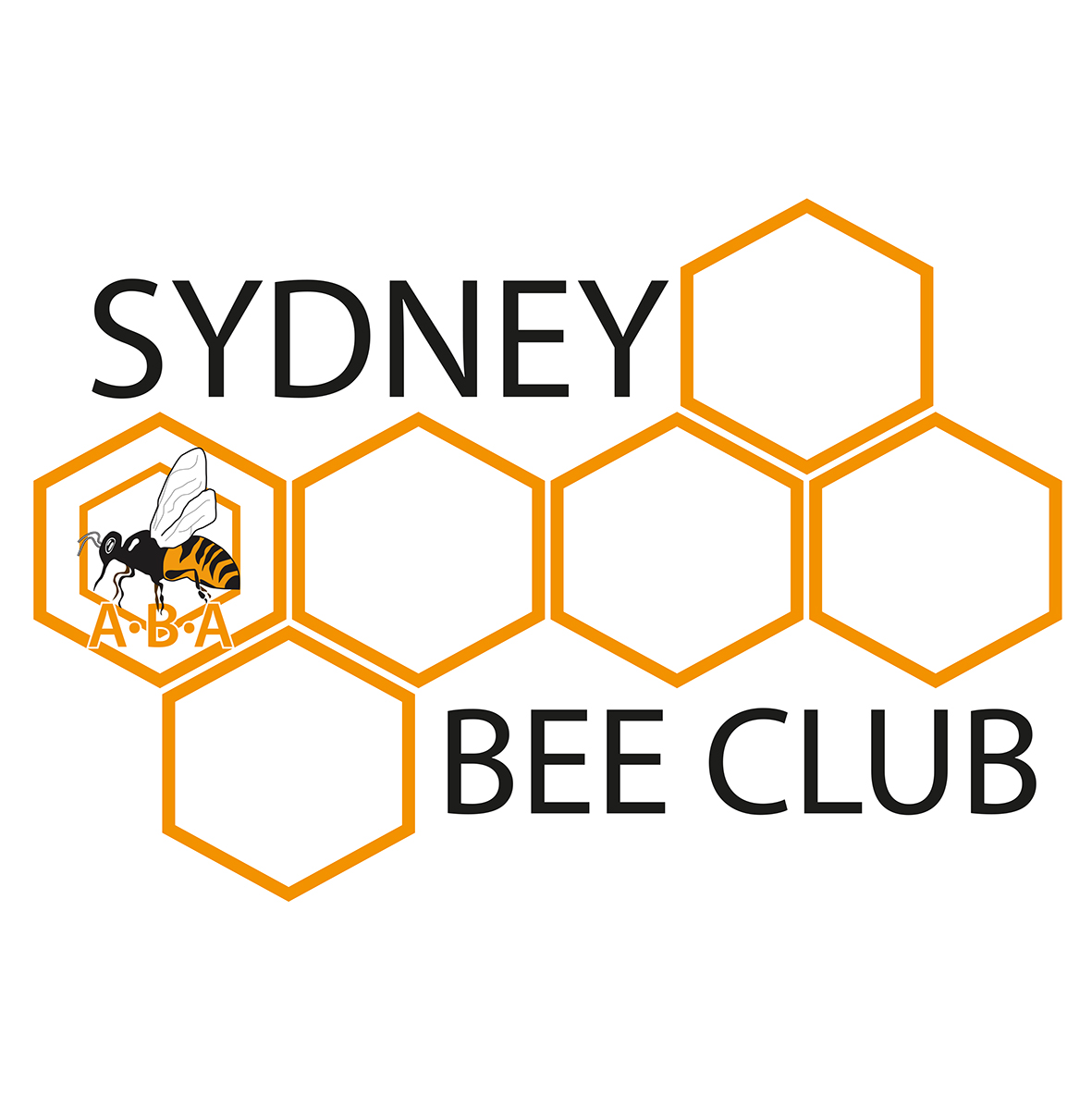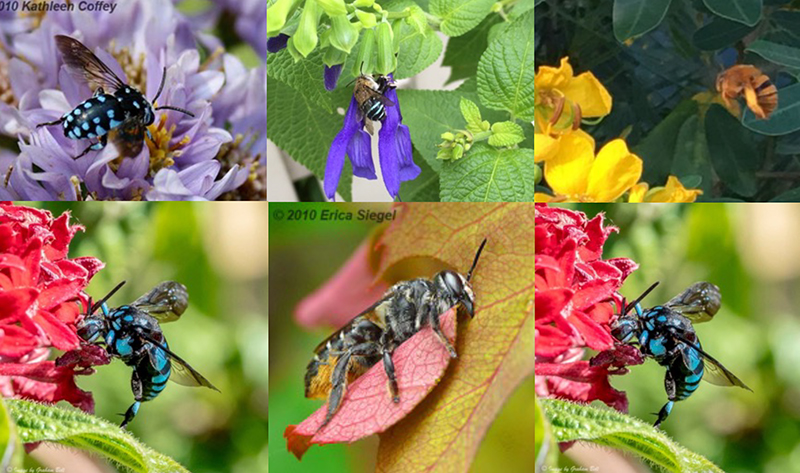Beeing Australian
Words by Gavin Smith
Beeing Australian is a bit like our human population, diverse in many aspects but with one difference, most of our bees have been here for many millennia possibly 120,000,000.
Bees evolved from wasps. Wasps are carnivores. As flowers developed, wasps found pollen protein to be as nutritious as their usual delicious spider, fly, bug etc. Most bees continue parallel behaviour.
2000 is the estimated number of bee variants in Australia and about 1660 have been named. Worldwide there are an estimated 20,000 and that is more than all bird and animal families.
Tongues determine which bee feeds on which flower. There are long tongued bees that draw nectar through tubelike structures. Short tongued bees lap nectar from pan shaped flowers.
Most bees do not make honey!
Most bees don’t live in hives!
Honey bees are feral animals in Australia.
Naming the bees is always fun as pronunciation is in the ear of the beholder. My guess is not always the same as the professional’s but don’t worry about it as they once guessed too. Five families out of the world’s seven families live here. One is exclusively Australian – Stenotritidae. The other four families are Halictidae, Colletidae, Megachilidae and Apidae. The last two are the long tongues.
When I first met native bees it was a hive at Chippendale belonging to Michael Mobbs. It was split by Peter Clarke of Ku-ring-gai Council. It was love at first sight. The spiralling brood structure, the honey pots and pollen balls covered in hundreds of tiny black bees was fascinating. A taste of their honey and the fact they were stingless clinched my introduction to Tetragonula carbonaria or sugar bag bees. Only eleven native bees out of 2000 live in a super colony and make honey. The rest are solitary although individuals do live in the same area or habitat in numbers or congregations.
Spotting native bees is an art in itself as their size, colour and flight speeds differ. They don’t stop very often and are difficult to photograph. Finding their home holes, burrows and nest areas is often accidental. Finding their preferred flowers means looking very closely as some are extremely small whist others dive deeply into certain flower clusters.
Sydney is blessed with around 250 varieties they tell me. My bee buddy Allyson Apte reports 15 varieties in her North Turramurra garden. Senka Pupacic, native animal rescuer, has reported 35 seen in her travels around the country.
I admit seeing most of mine in photographs and movies belonging to other dedicated specialists on You tube or Facebook. My Petersham garden has attracted five. Others I have observed when bushwalking, gardening and visiting known areas where they congregate.
I have three sugar bag colonies in hives at my home and a variety of bee hotel habitats hang from trees. My wife, Rosamund has planted a huge variety of flowering plants for the bees. Blue banded, teddy bear, leaf cutter and neon blue cuckoo bees are regular visitors. We have a small pond with a bird bath fountain for anything wanting a drink. Birds, honey bees and wasps use it regularly. Native bees never seem to need a drink. Nectar is their preferred brew.
Why study native bees? They live in a wide variety of habitats. The populations have been reduced through land clearing, bushfire and flood, chemical sprays and our constant demand for more of everything.
They are needed for pollination of our bushland. Some have specific plants that are only pollinated by one bee variety. Others are buzz pollinated. Carpenter and blue banded bees park their wings and use the same muscle set to vibrate flowers that release pollen only when their unique frequency is reached. Tomato plants are an example.
Some bees are cleptoparasitic. They behave as cuckoos do by laying their eggs in the nests of other bees who then have the task of provisioning. Cuckoo bees are very brightly coloured and spotted. They have thick hair that protects them for attack by the host bee. Most native bees have stings but rarely sting humans unlike apis that need to protect their colony. I know of only one casualty in all the years. A bee rescued from a spider’s web bit her thumb.
Native bees may be roughly organised into three habitat types. The diggers, the drillers and the squatters. Teddy bear and blue banded bees burrow into earth and sandy soils creating very deep tunnels with branches off to the side. Drillers bore holes and clear the pith from plant stems to form their nest cavity. Peacock and the great carpenter bees are a good example. Squatters will use holes and hollows in trees and other plants made by other insects such as boring beetle larvae.
The more you read and observe the more fascinating our bees become. To assist I have attached a list of sites where photographers hang out their best shots and movies.
For the gardeners I have a short list and recent prices of some of the plants available that will encourage native bees to visit and forage in your garden.
Bees best, Gavin Smith
Where to Look for Native bee connections and information
Gavin Smith – Bee Biodiversity & Biosecurity
0438686696
[email protected]
BEECOLOGY with Allyson Apte
Tetragonula carbonaria Native Bees sugar bag beehives & advice
[email protected]
• Australian Native Bees – The Wheen Bee Foundation
• Our guide to native bees – CSIROscope
• Aussie Bee Website homepage
• Aussie Bee YouTube
• Bees in the burbs | Facebook
• Bee B&B Hotel Program – Weleda – bee hotels
• Bee Hotel – Fact Sheets – Gardening Australia – ABC
Plants for Your Garden - " as simple as ABC"
Aussiebee website has a list of bee friendly plants and I added some.
Bunnings Warehouse is a good place to start but they are slack at keeping their stock watered and fed in store. Check their health. Buy only sturdy plants.
Flower Power don’t answer the phone and don’t put prices online. Prices and availability vary due to season and fashion demand.
Acacia.-wattles many varieties $25
Alyssium – sweet Alice $4 Seeds or seedlings
Abelia $17.50
Buddleja or Butter Fly Bush $12.50
Borage, seeds $4
Banksia,$12.50
Basil -perennial Tulsi, Check ocimum sp. on label.Holy or sacred basil. Seeds $9
Callistemon or bottle brush, many varieties from $17.50
Carrots, From seed. $4.50.Seedlings $4.50
Daisies, $7
Dwarf Eucalyptus-gum trees, Flower Power $20
Euphorbia, $13
Grevillia-spider flower,$21
Iris native,$10
Lavender, $11
Leptospermum-tea tree,$20
Melaleuca – Honey myrtle.$9
Westringia – native rosemary $19.
Also check your local council’s native plant nurseries.
“The Bee Friendly Garden” written by Doug Purdie is online for about $30. Doug is a local beekeeper who started the Sydney Bee Club. His shop The Urban Beehive is at Matraville.

